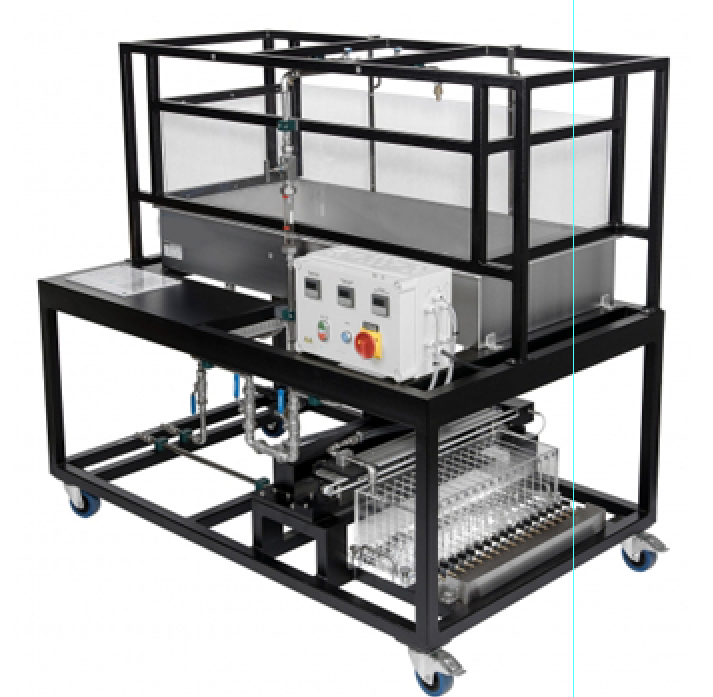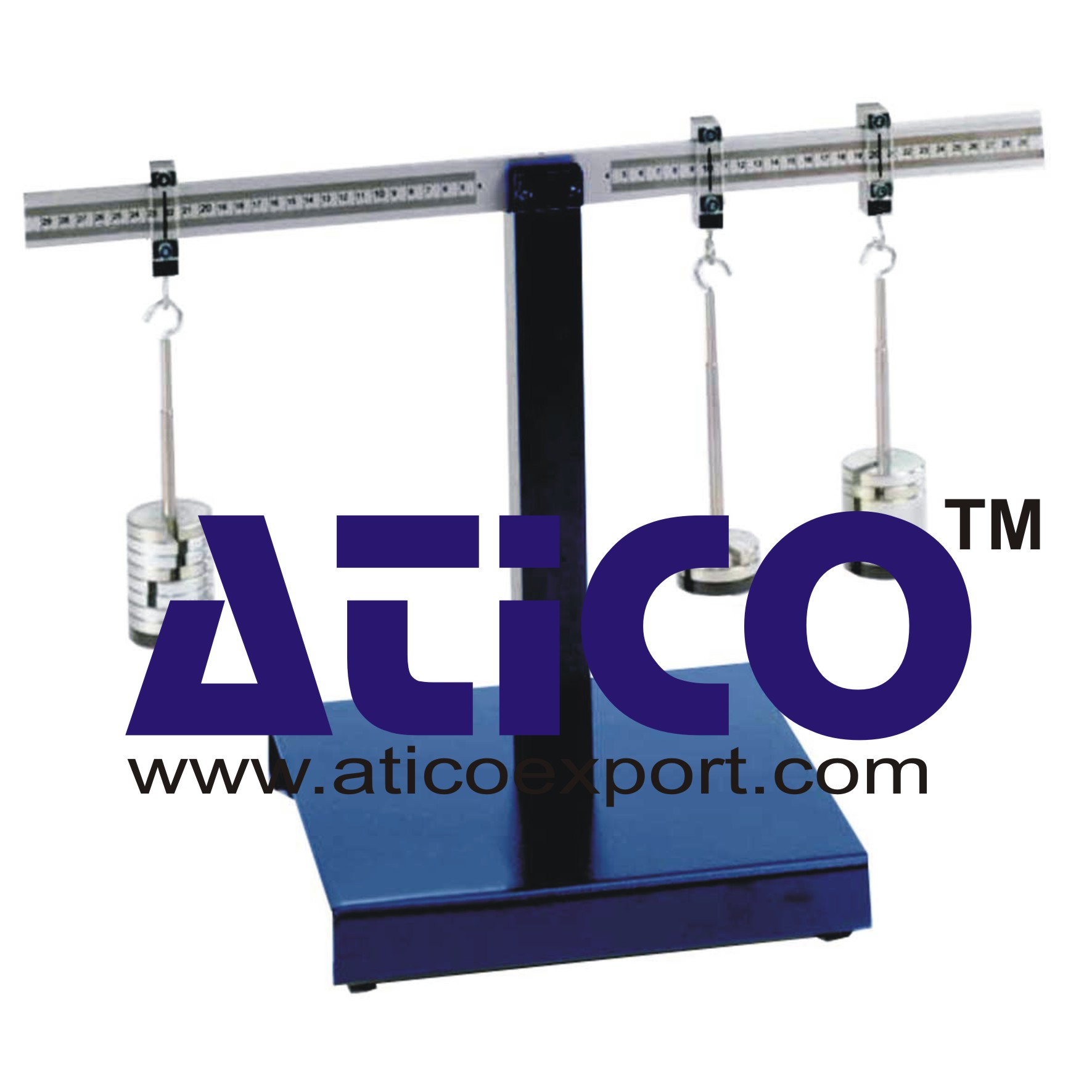Hydrographs After Precipitation
Categories: Engineering Lab EquipmentHydrographs are an important tool for the representation of hydrological data such as precipitation, groundwater levels or discharges.It produces precipitation of varying duration and intensity. The s...
Product
Description
Hydrographs are an important tool for the representation of hydrological data such as precipitation, groundwater levels or discharges.
It produces precipitation of varying duration and intensity. The storage capacity of soils with different saturation is also examined. Using various drainage methods, it is possible to demonstrate the correlations between precipitation and seepage.
The trainer includes a tank with a sand filling, which is flowed through by water. The water is supplied to the tank via a precipitation device with two nozzles that can be adjusted separately via valves. To study different drainages, the water is drained either via a drainage pipe or a drain chamber, which is separated from the experimental section by a screen.
The draining water is distributed over 17 transparent chambers. This creates a profile over time of the water drain. The water levels are measured and plotted in a hydrograph.
Learning Objectives/Experiments
Effect of precipitation of varying duration or intensity on soils with different saturation
Record hydrographs after precipitation
Storage capacity of soils with different saturation
Compare natural drainage with drainage via drainage pipe
Influence of rainwater retention basin on the hydrograph
Specification
Investigation of the effect of precipitation on soils
Stainless steel experimental tank with transparent splash guard
Precipitation device with two nozzles, adjustable precipitation area and quantity
Precipitation time can be adjusted via solenoid valve with timer
Distribution to 17 chambers by timer
Mobile sled carriage distributes draining water to 17 chambers in the measuring tank
Water drain either via removable drain chamber with fine-mesh screen or via drainage pipe
Separate flushing connection for pipelines
Drip pans as rainwater retention basins
Rotameter (inlet), indicator of precipitation time, lag time and measurement time
Technical data
Experimental section
volume: 1300x600x200mm
max. sand height: 185mm
Precipitation device
2 nozzles, individually adjustable
flow rate: 1…6,7L/min, square spray pattern
precipitation: max. 320L/h
Measuring tank with 17 chambers
volume: 17x0,9L
Timers
precipitation: max. 99min59s
lag time until start of measurements: max. 99min59s
measurement time per chamber: max. 99min59s
4 drip pans: 305x215x55mm
Steel scale: 200mm
Measuring ranges
flow rate: 30…320L/h
230V, 50Hz, 1 phase
230V, 60Hz, 1 phase; 120V, 60Hz, 1 phase
quick overview :
Hydrographs are an important tool for the representation of hydrological data such as precipitation, groundwater levels or discharges.
It produces precipitation of varying duration and intensity. The storage capacity of soils with different saturation is also examined. Using various drainage methods, it is possible to demonstrate the correlations between precipitation and seepage.
The trainer includes a tank with a sand filling, which is flowed through by water. The water is supplied to the tank via a precipitation device with two nozzles that can be adjusted separately via valves. To study different drainages, the water is drained either via a drainage pipe or a drain chamber, which is separated from the experimental section by a screen.
The draining water is distributed over 17 transparent chambers. This creates a profile over time of the water drain. The water levels are measured and plotted in a hydrograph.
Learning Objectives/Experiments
Effect of precipitation of varying duration or intensity on soils with different saturation
Record hydrographs after precipitation
Storage capacity of soils with different saturation
Compare natural drainage with drainage via drainage pipe
Influence of rainwater retention basin on the hydrograph
Specification
Investigation of the effect of precipitation on soils
Stainless steel experimental tank with transparent splash guard
Precipitation device with two nozzles, adjustable precipitation area and quantity
Precipitation time can be adjusted via solenoid valve with timer
Distribution to 17 chambers by timer
Mobile sled carriage distributes draining water to 17 chambers in the measuring tank
Water drain either via removable drain chamber with fine-mesh screen or via drainage pipe
Separate flushing connection for pipelines
Drip pans as rainwater retention basins
Rotameter (inlet), indicator of precipitation time, lag time and measurement time
Technical data
Experimental section
volume: 1300x600x200mm
max. sand height: 185mm
Precipitation device
2 nozzles, individually adjustable
flow rate: 1…6,7L/min, square spray pattern
precipitation: max. 320L/h
Measuring tank with 17 chambers
volume: 17x0,9L
Timers
precipitation: max. 99min59s
lag time until start of measurements: max. 99min59s
measurement time per chamber: max. 99min59s
4 drip pans: 305x215x55mm
Steel scale: 200mm
Measuring ranges
flow rate: 30…320L/h
230V, 50Hz, 1 phase
230V, 60Hz, 1 phase; 120V, 60Hz, 1 phase
Product
Reviews
add Review
reviews
No Review Yet.
Copyrights © 2025 All Rights Reserved by Atico














Product
Reviews
add Review
reviews
No Review Yet.